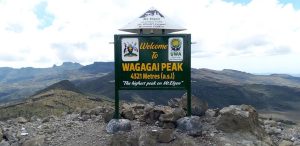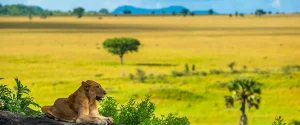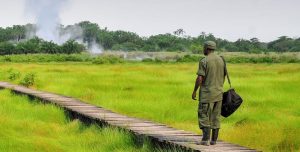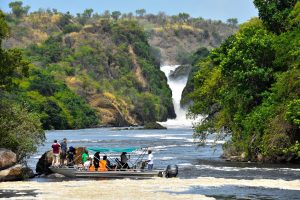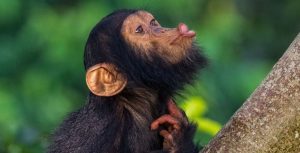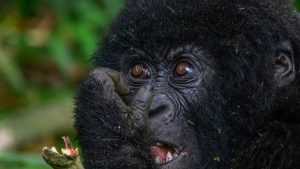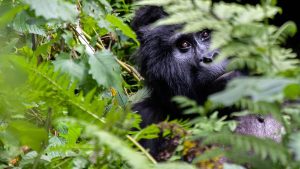Queen Elizabeth National Park
UGANDA
Queen Elizabeth National Park
Queen Elizabeth National Park is the most popular safari destination in Uganda, it is the most diverse park in the country with a beautiful combination of forests, grasslands and waterscapes. The park is nestled between the majestic Rwenzori Mountains and the shore of Lake Edward, with a unique geography featuring expansive savannah plains and rolling hills dotted with crater lakes, such as Lake Katwe, known for its salt extraction. The Kazinga beautiful Kazinga Channel – the focal point of the park, a water channel connecting Lake George and Lake Edward. It is renowned for its large population of hippos, which is reportedly the highest concentration in East Africa.
Queen Elizabeth National Park covering an area of 1978 square meters was originally gazetted as the Lake George and Lake Edward game reserves in 1925, later in 1052 it was upgraded to create one of the first national parks in Uganda.
Wildlife in Queen Elizabeth National Park
Queen Elizabeth National Park is an incredible wildlife sanctuary in Uganda, renowned for its biodiversity. The park is home to over 95 mammals species, 10 primate species, and more than 600 bird species, making it one of the most diverse national parks in Africa.
The park is home to four of the Big Five – lions, leopards, buffaloes and elephants. Lions in Queen Elizabeth National Park are particularly famous for their unique behaviour of climbing, especially those found in Ishasha Sector where they are often seen lounging on branches. Other mammals in the park includes spotted hyenas, giant forest hogs, hippos, several antelope species including Uganda Kob, waterbuck, topis and defassa waterbuck and various species of monkeys such as olive baboons and black and white colobus monkeys.
Birdlife in Queen Elizabeth National Park
With over 600 bird species recorded, Queen Elizabeth National Park is one of the top birding spots in Uganda. Notable bird species include the African fish eagle, yellow-billed stork, and various kingfishers.
Queen Elizabeth National Park supports a wide range of avian life, making it one of the best birding destinations in Uganda. Other bird species found in the park include Knob-billed Ducks, Jack Snipe, Grey-headed Kingfishers, Grey-headed Gull, Grey-capped Warbler, Grey Kestrel, Great-white and Pink-backed Pelicans, Greater Swamp and winged Warblers, Great white and Pink-backed Pelicans, Great and Long-tailed Cormorants, Gabon and Slender-tailed Nightjars, Eurasian Wigeon, Curlew Sandpipers, Corncrake, Common Teal, Common Squaco Heron, Common Snipe, common sand Martins, common Greenshank, Collard Pranticles, Chapin’s flycatcher, Brown Snake Eagle, brimstone Canary, bright coloured Saddle-billed Stork, Black-tailed Godwit, black-rumped buttonquail, Black-headed Gonoleks, Black Crake, Black Bee-eater, Bateleur, Bar-tailed Godwit, African White-tailed Lark, African skimmer, African Open-billed Stork, African Mourning Dove, African Jacana, African Harrier Hawk, African Fish Eagle, African Broadbill, and African beautiful Black-headed Gonolek.
What to do in queen Elizabeth National Park
Activities to Do in Queen Elizabeth National Park
Game Drives
Game drives are the most popular activity to do in Queen Elizabeth National Park allowing you to see animals calling the park home, the scenery and the landscape that includes forests, savannah grasslands, swamp lands, acacia woods, crater lakes, gorges and the nearby Rwenzori Mountains.
These game drives are done in the three sectors of Queen Elizabeth National Park that is the Kasenyi Plains (near Kazinga Channel), Ishasha Sector (famous for tree climbing lions) or the Katwe Crater Fields. With an expert safari guide leading the way on popular routes like Mweya and Kasenyi offer up-close encounter that make Uganda wildlife safaris truly special.
Game drives in Queen Elizabeth National Park are done as morning game drives, afternoon game drives and full day game drives. This wildlife enriching experience offer incredible sighting of various animals including lions, leopards, cape buffaloes, giant forest hogs, bushbucks, waterbucks and several bird species among others.
Launch Cruises on Kazinga Channel
Launch trips on the Kazinga Channel provide the most relaxing way to explore Queen Elizabeth National Park. The 2-hour return voyage between Mweya and the channel’s entrance into Lake Edward cruises beside bank lined with resident hippos, crocodiles and water birds and visiting elephant, buffalo and antelopes among others.
Forest Walks
For nature enthusiasts, Queen Elizabeth National Park offer incredible forest walks done in Kyambura Gorge and Maramagambo Forest.
Kyambura Gorge – This forest-filled gorge extends from the Kichwamba Escarpment to the Kazinga Channel. Enjoy the giddy viewpoint on the edge of the 100m-deep chasm before descending into the depths to track chimpanzees with Uganda Wildlife Authority guided.
Maramagambo Forest – Explore this shady forest situated at the foot of the Kichwamba Escarpment, beautifully contrasting with the park’s open grasslands. Guided walks offer sightings of primates and rare birds including the forest flycatcher, white-napped pigeon and the strinking Rwenzori turaco and visit Lake Nyamusigire – home to the African finfoot, this is formed by three connected crater lakes. The copper-rich Blue Lake and the Bat Cave with its resident bat-gorged python.
Birding
Birding is one of one of the highlight safari experiences in Queen Elizabeth National Park offering sightings of resident and migratory bird species such as the migratory water species on Kazinga channel, spectacular seasonal congregations of flamingos on the Kyambura and Katwa soda lakes.
Some of the birds to lookout for on a Uganda birding safari in Queen Elizabeth National Park include Flamingo, Knob-billed Ducks, Jack Snipe, Grey-headed Kingfishers, Grey-headed Gull, Grey-capped Warbler, Grey Kestrel, Great-white and Pink-backed Pelicans, Greater Swamp and winged Warblers, Great white and Pink-backed Pelicans, Great and Long-tailed Cormorants, Gabon and Slender-tailed Nightjars, Eurasian Wigeon, Curlew Sandpipers, Corncrake, Common Teal, Common Squaco Heron, Common Snipe, common sand Martins, common Greenshank, Collard Pranticles, Chapin’s flycatcher, Brown Snake Eagle, brimstone Canary, bright coloured Saddle-billed Stork, Black-tailed Godwit, black-rumped buttonquail, Black-headed Gonoleks, Black Crake, Black Bee-eater among others.
Crater Drive
There are dozens of volcanic craters dotting the landscape north of Mweya reminding us of the Albertine Rift’s violent tectonic history. The 27km Crater Drive between the Kabatoro and Crater gates follow a breathtaking route around the rims of extinct craters filled, with lakes, forest and grasslands.
The Queen’s Pavillion, at the Crater Gate on the eastern edge of the crater area, has been visited three times by the British royalty. A small information centre and coffee shop stands on the site. The equator markers straddling the adjacent Kasese highway provide a popular photo opportunity.
Getting to Queen Elizabeth National Park
Road: There are two routes used to get to the park from Kampala to Mweya, the primary tourism hub. The most scenic route passes through Fort Portal (410km) and offers detours to Kibale National Park, Semuliki National Park and Rwenzori Mountains National Park. The alternative route is 420 km running through Mbarara and Bushenyi and passes Lake Mburo National Park.
The Ishasha Sector, the southerly section of Queen Elizabeth National Park is directly on the main route to/from Buhoma – the main mountain gorilla tracking trailhead in Bwindi Impenetrable National Park which lies 62km south.
Air: Charter flights can be arranged to airstrip at Kasese, Mweya and Ishasha.
When to Visit Queen Elizabeth National Park
Queen Elizabeth National Park is a year-round destination meaning it can be visited any time of the year. However, the best time is generally during the drier months of the year. From June to early October and December through to early March, in this period the vegetation cover is short and animals normally congregate at the remaining water holes making seeing them easier.
Normally, higher rainfall in Uganda is received in October and November and March through the end of May. The heaviest rainfall occurs in April.
Accommodation in Queen Elizabeth National Park
There are several accommodation options in Queen Elizabeth National Park found in the different regions of the park, these range from budget, midrange to luxury and they include
- Ishasha Wilderness Camp
- Mweya Safari Lodge
- Katara Lodge
- Queen Elizabeth Bush Lodge
- Jacana Safari Lodge
- Hippo Hill Camp among others.

